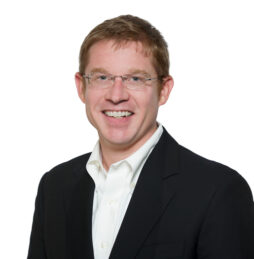April 2018 FERC Technical Conference on Distributed Energy Resources: Technical Considerations for the Bulk Power System
On April 11 and 12, the Federal Energy Regulatory Commission (FERC) held a technical conference to address the participation of distributed energy resource (DER) aggregations in markets managed by independent system operators (ISOs) and regional transmission organizations (RTOs) and, more broadly, the potential effects of DERs on the bulk power system (Dockets RM 18-9 and AD 18-10). The technical conference relates to a Notice of Proposed Rulemaking issued by FERC in November 2016, which would require ISOs and RTOs to establish market rules for energy storage and allow aggregated DERs to participate in wholesale markets. In February 2018, FERC addressed energy storage by issuing Order 841, which is designed to remove barriers for the participation of energy storage resources in wholesale markets. The conference dealt with issues ranging from DER participation and compensation to potential wholesale market operational issues related to DERs.
The technical conference consisted of seven panels (see table below) aimed at assisting FERC in gathering information on proposed DER aggregation reforms. Each panel was led by either Commission staff or by the Commissioners themselves. Panels focused on different sets of questions posed by Commission staff. During the two-day technical conference, FERC heard from a wide range of stakeholders, as shown below:
 Some Highlights from FERC’s DER Technical Conference
Some Highlights from FERC’s DER Technical Conference
- The first panel, “Economic Dispatch, Pricing, and Settlement of DER Aggregations,” included representatives from CAISO, ISO-NE, MISO, NYISO, and PJM. Some highlights of this session included the following:
- FERC Commissioner Cheryl LaFleur asked the panel if there are regional differences which could prevent FERC from applying a broad rule to address DERs in all wholesale markets.
- Smart grid operators argued that due to differences in distribution utilities’ system capabilities, regulation by states may be more appropriate than blanket federal regulation by FERC because integrating DERs into markets will require different regional approaches.
- The panel discussed how the aggregation of DERs will occur on a nodal system, and PJM’s Independent Market Monitor warned that aggregation in a structure larger than a node may be too big for the market to reasonably accommodate.
- Representatives from PJM and CAISO spoke in favor of DER aggregation participation in markets, noting that aggregation allows for the “right-sized” resource solutions and there are benefits from any sized resource, even those smaller than current size thresholds.
- The second panel, “Discussion of Operational Implications of DER Aggregation with State and Local Regulators,” included public utility representatives from California, DC, New England, New York, Ohio, and Pennsylvania as well as a representative from American Municipal Power and MISO. Some highlights:
- FERC Chairman Kevin McIntyre asked the state regulators what potential negative impacts the integration of DERs into wholesale markets could have on state distribution systems.
- Panelists stressed the need for both coordination between grid operators and state utilities in dispatching DERs and the need for ISOs/RTOs to have a degree of visibility into the distribution system.
- The panel also considered whether or not DERs should be able to participate in both the wholesale market and in retail power markets, also known as “dual participation.”
- The representative of the Organization of MISO States advocated for FERC allowing states to decide whether to allow dual participation or to restrict DERs to one market.
Implications
- While FERC continues to mull its final DERs integration order, some states are attempting to handle DERs on their own. Illinois has laid an excellent foundation that positions it well for modernization of the grid and increasing penetrations of DERs. California and New York are also actively working to lay the groundwork for DER integration.
- It is still unknown when an order will be issued, as it seems FERC is still in the investigation stage of the rulemaking process. It’s expected that FERC will continue to work with ISOs and RTOs as it investigates its role in determining how to best integrate aggregated DERs into wholesale markets.
- As DER penetration continues to grow, at least in some regions, the state versus federal jurisdictional issues will be held in increasingly sharp relief. For example, one key point of possible friction may be how DERs are compensated for both distribution and wholesale level services they might provide. As is the case with many issues, the challenge for FERC will be striking a balance between establishing uniform principles and maintaining regional flexibility, all while balancing interests in maintaining fair and competitive markets and system reliability (for both the bulk system and distribution system) with state and other prerogatives.
More Information
FERC: Distributed Energy Resources-Technical Considerations for the Bulk Power System (Docket Nos. RM18-9-000, AD18-10-000) Calendar Event Page
FERC: Technical Conference Webcast Archive
Utility Dive: MISO states push for authority over DER in electricity markets at FERC meeting
Greentech Media: Grid Operators Describe Challenges of Distributed Energy Aggregation to FERC
This report is part of the Grid Edge Minute series. To view all featured Minutes, please click here.
Additional Contributing Authors: Benjamin Lozier
View More


